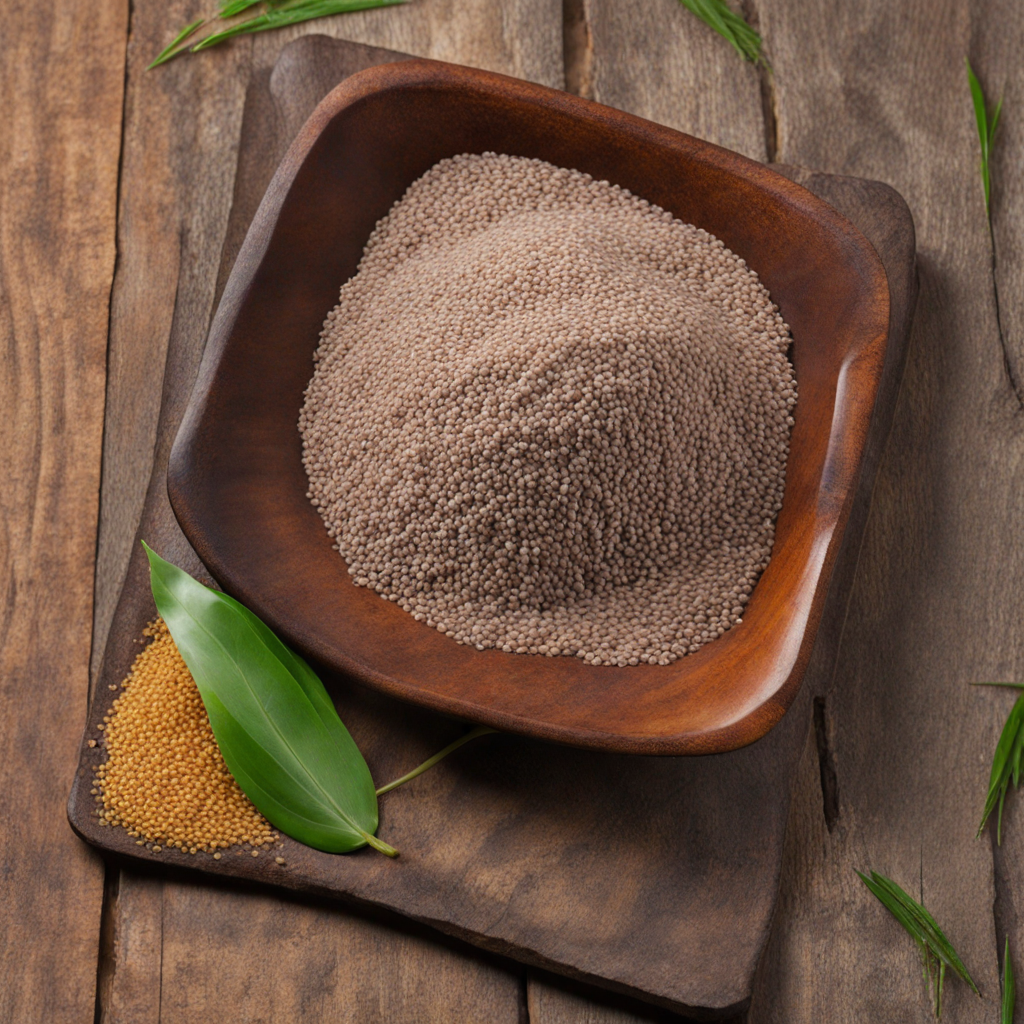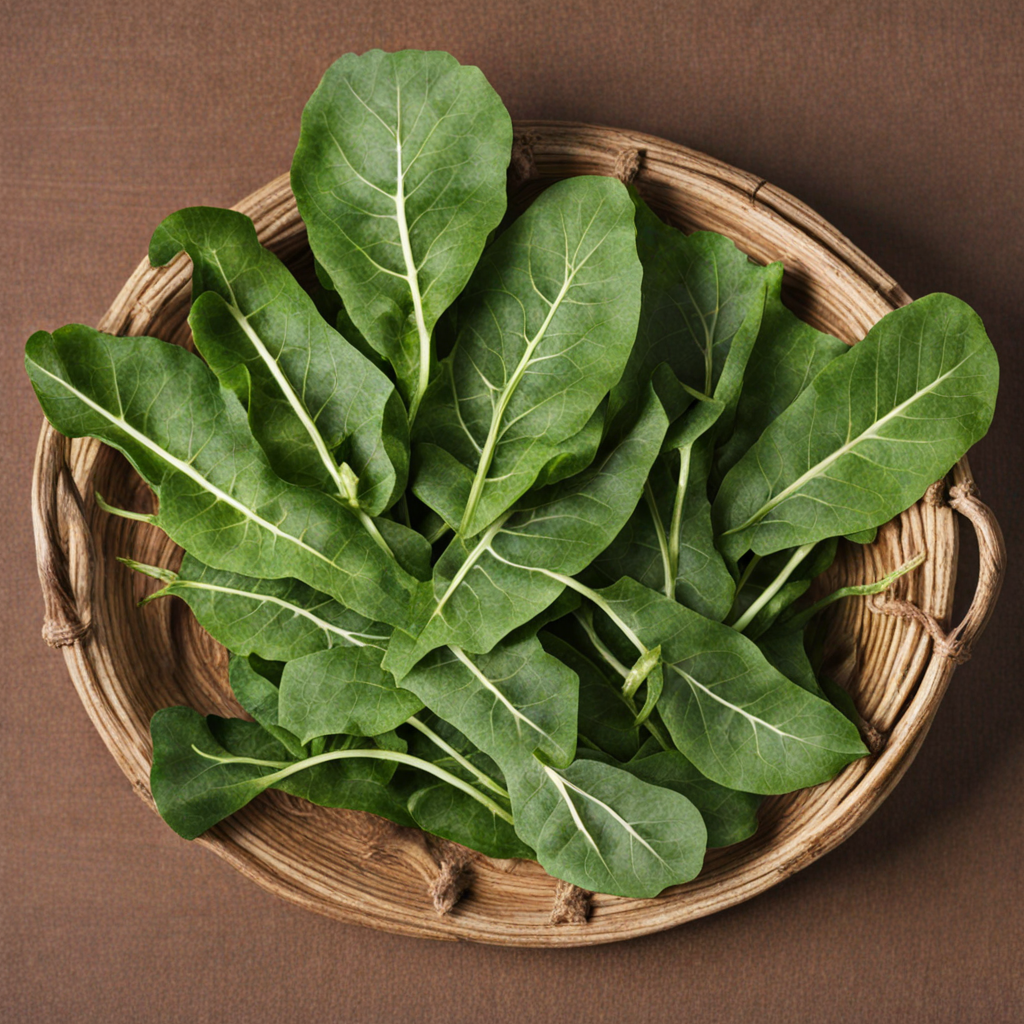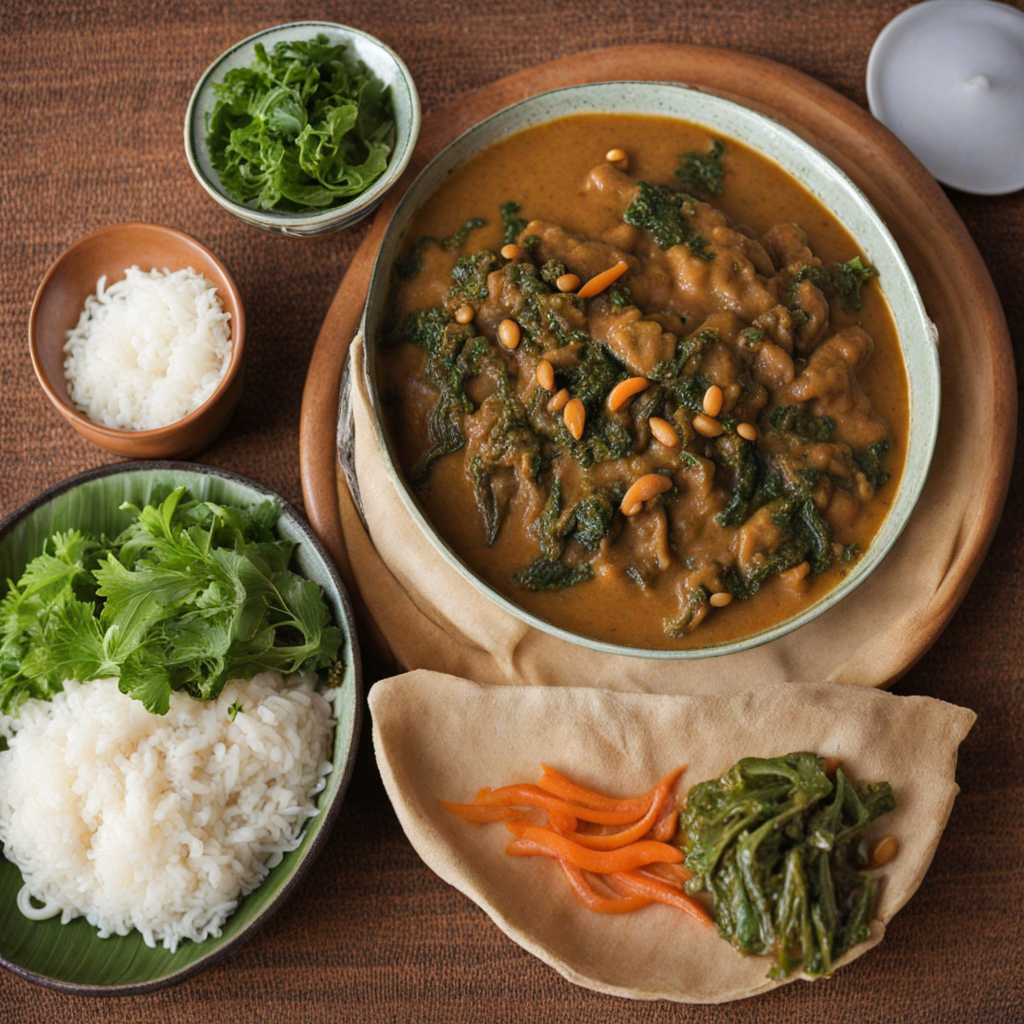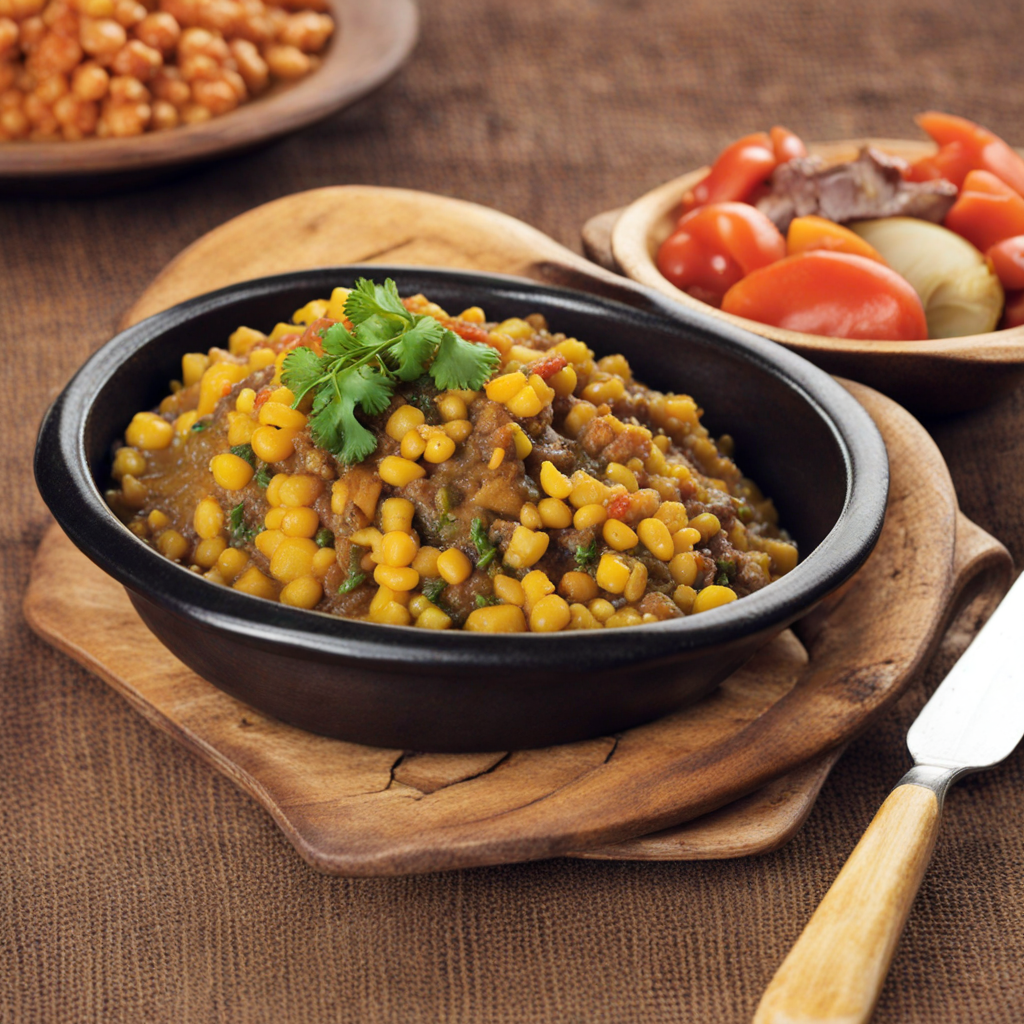Zikale
Zikale is a traditional Zambian dish that tantalizes the taste buds with its unique blend of flavors and textures. At its core, Zikale consists of finely ground maize meal, which is skillfully mixed with a variety of fresh vegetables and spices. The dish is often enriched with ingredients like pumpkin leaves, sweet potatoes, or groundnuts, which add both nutritional value and a rich, earthy flavor. The combination creates a hearty and comforting meal that showcases the agricultural bounty of Zambia, reflecting the country's deep connection to its land and heritage. What sets Zikale apart is its method of preparation, which often involves slow-cooking the maize meal to achieve a smooth, porridge-like consistency. This technique allows the flavors to meld beautifully, resulting in a dish that is both satisfying and soul-warming. The addition of local spices and herbs, such as chili or garlic, introduces a subtle kick that elevates the dish to new heights, making every bite a delightful experience. Zikale is commonly enjoyed with a side of grilled meat or fish, enhancing the meal's overall depth and complexity. Eating Zikale is not just about the food; it's an experience steeped in Zambian culture. Typically served in a communal setting, it brings friends and family together around a shared plate, embodying the spirit of hospitality that is so cherished in Zambian society. The dish is often enjoyed during special occasions and gatherings, making it a symbol of celebration and togetherness. For those seeking to explore new culinary horizons, Zikale offers a wonderful opportunity to savor the genuine flavors of Zambia while connecting with its rich traditions.
How It Became This Dish
The History of Zikale: A Culinary Jewel from Zambia Zikale, a traditional dish from Zambia, is not just a meal; it embodies the rich cultural tapestry of Zambian history, agricultural practices, and communal life. This dish, primarily made from the leaves of the cassava plant, offers a fascinating glimpse into Zambian society, its agricultural foundations, and the culinary traditions that have been passed down through generations. #### Origins of Zikale The story of Zikale begins with the cassava plant, which is believed to have originated from South America and was introduced to Africa in the 16th century. Cassava (Manihot esculenta) became a staple crop across many African countries, including Zambia, due to its adaptability to various climates and its resistance to drought. The leaves, often overlooked compared to the starchy tubers, became an essential source of nutrition, particularly in rural areas where food security was a challenge. In Zambia, Zikale has evolved as a dish that highlights the importance of cassava leaves in local cuisine. The word "Zikale" itself is derived from the local dialect, describing the method of preparation and the communal aspect of eating together. Traditionally, this dish is made by finely chopping the young cassava leaves and cooking them with ingredients such as tomatoes, onions, and sometimes ground nuts. The resulting dish is both nutritious and flavorful, providing a vital source of vitamins and minerals, especially for communities that rely heavily on plant-based diets. #### Cultural Significance Zikale is more than just a meal; it is a symbol of Zambian identity and cultural heritage. Within Zambian society, food often plays a critical role in social cohesion and community bonding. Zikale is frequently prepared for family gatherings, celebrations, and communal feasts. The act of cooking Zikale can be a communal activity, bringing together women and families who gather to prepare the dish, share stories, and strengthen social ties. In Zambian culture, food is inherently tied to customs and rituals. Zikale is often served alongside staple foods such as nshima (a thick porridge made from maize flour), creating a balanced and hearty meal. This combination reflects the Zambian philosophy of moderation and balance in diet, emphasizing the importance of incorporating various food groups into daily meals. The dish also serves as a connection to the land, as it utilizes locally sourced ingredients, reinforcing the significance of agriculture in Zambian cultural identity. #### Development Over Time As Zambia has undergone various social and economic changes, so too has the way Zikale is prepared and consumed. Historically, Zikale was a dish rooted in subsistence farming practices, where families grew their own cassava and relied on seasonal produce for sustenance. However, with the advent of globalization and urbanization, the preparation of Zikale has adapted to include readily available ingredients in urban markets, leading to variations in the traditional recipe. In urban areas, Zikale may be prepared with additional ingredients, such as meat or fish, reflecting the dietary preferences and economic means of city dwellers. The dish has also gained popularity beyond its traditional roots, with chefs and food enthusiasts experimenting with modern culinary techniques and presentations, thus introducing Zikale to a broader audience. This evolution showcases the resilience of traditional foods, as they adapt to contemporary tastes while retaining their cultural significance. Moreover, the rise of food markets and Zambian cuisine in the global culinary scene has led to a renewed interest in traditional dishes like Zikale. Food festivals and culinary events have started featuring Zikale, allowing Zambians and international visitors alike to experience the flavors and traditions encapsulated in this dish. This exposure has contributed to a greater appreciation of local ingredients and traditional cooking methods among younger generations, who are now more inclined to embrace their culinary heritage. #### Nutritional Value and Sustainability The nutritional profile of Zikale is noteworthy. Cassava leaves are rich in protein, vitamins A and C, and essential minerals such as calcium and iron. The incorporation of other ingredients, such as groundnuts, further enhances the dish's nutritional value, making it a wholesome meal option. In a country where food security remains a pressing issue, Zikale serves as a model for sustainable cooking practices. The ability to utilize locally grown ingredients not only supports local agriculture but also reduces the carbon footprint associated with food transportation. #### Conclusion Zikale is more than just a dish; it is a living testament to the cultural heritage of Zambia. Rooted in the agricultural practices of the past, Zikale has evolved over time, adapting to the changing landscapes of Zambian society while retaining its core significance as a communal and nutritious meal. As Zambia continues to navigate the challenges of modernization and globalization, dishes like Zikale serve as reminders of the importance of cultural identity, community, and sustainable practices. In a world increasingly focused on fast food and convenience, the resurgence of interest in traditional cuisines like Zikale is a celebration of heritage, resilience, and the enduring power of food to bring people together. As Zikale finds its place both on the tables of Zambians and in the hearts of food lovers around the globe, it stands as a proud emblem of Zambia’s culinary legacy, inviting all to share in its rich flavors and history.
You may like
Discover local flavors from Zambia







